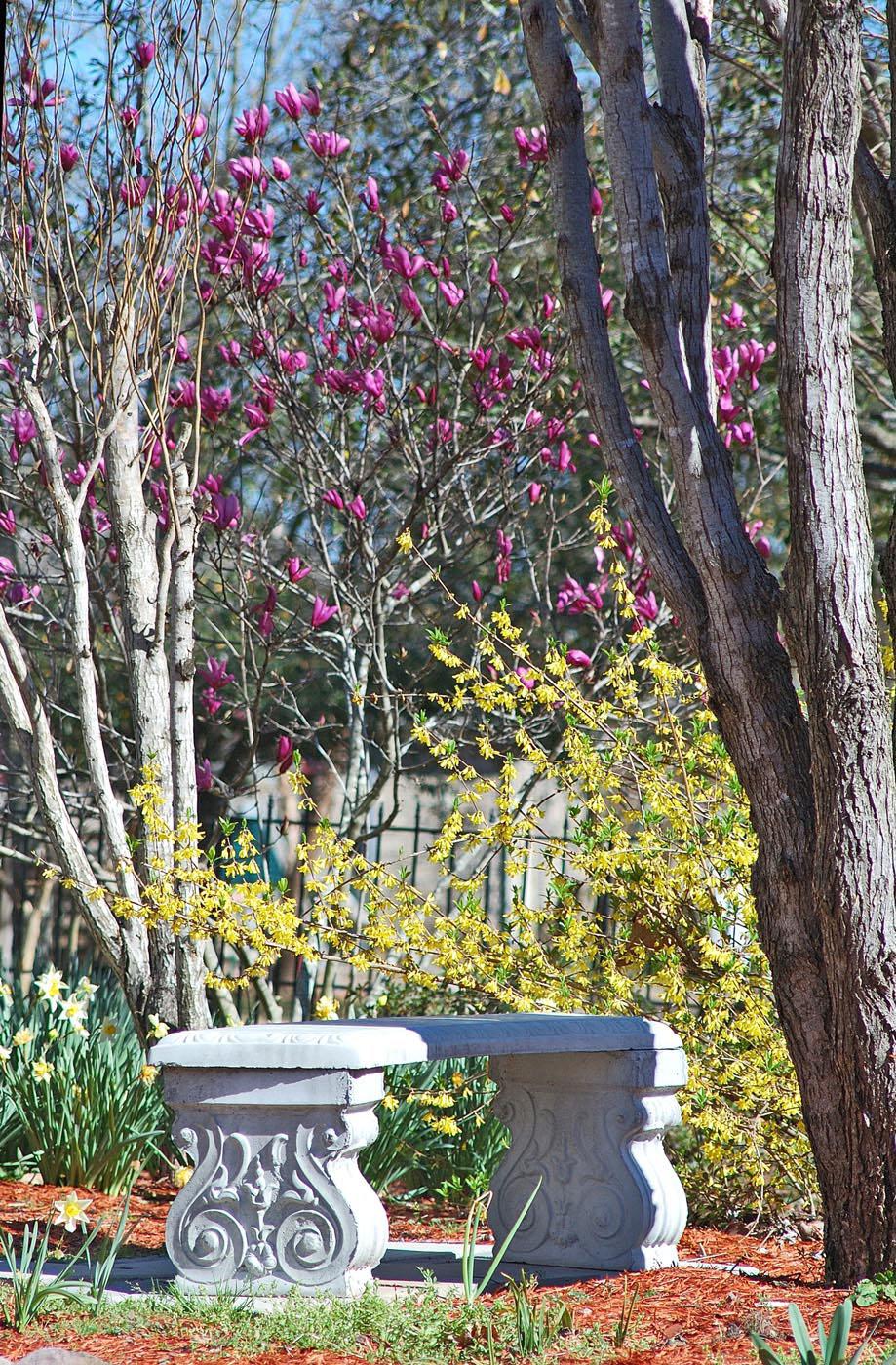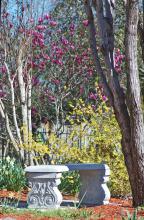Information Possibly Outdated
The information presented on this page was originally released on February 19, 2009. It may not be outdated, but please search our site for more current information. If you plan to quote or reference this information in a publication, please check with the Extension specialist or author before proceeding.
Shrubs, trees can have complementary colors
By Norman Winter
MSU Horticulturist
Central Mississippi Research & Extension Center
Mention complementary color schemes in the garden and your first thought is probably of flowers. The idea can be carried further to include shrubs and small trees, and spring is a great time to put it on display.
I noticed one such striking combination a few hundred yards from my home. From the hot or warm side of the color wheel were bright, cheerful yellows in the form of a large, naturally growing forsythia and a patch of daffodils. A fine saucer magnolia (Magnolia x soulangeana) specimen with cool-colored, deep purple flowers contrasted incredibly well with the forsythia.
The forsythia naturally has long, arching stems, but many people make the mistake of shearing theirs into tight balls. Maintain the forsythia's natural habit by selectively pruning unproductive branches immediately after bloom and trimming the rest by about a third. Next year's bloom is produced on this year's growth. The forsythia just doesn't look its best when grown by control junkies who must have the tight, sheared look.
There are varieties of forsythia, and many gardeners are surprised to know there are more than 30 named selections. Dwarf compact forms to try are Gold Tide and Golden Nugget. Those of typical height you may want to try are Spring Glory, Linwood Gold and Spectabilis.
Getting back to the complementary color scheme I mentioned is the purple of the saucer magnolia. The height of this plant varies by cultivar and will range from 15 to 30 feet. Space them 15 to 20 feet apart or from other spring-blooming trees.
Their flowers are spectacular in color, shape, size and fragrance. Even if the blossoms get killed by freezes every other year, those years in bloom are worth it. The large, fuzzy buds are unique in the winter garden and can be used as an accent or specimen.
Feed saucer magnolias and forsythias in late winter. Apply a formula such as an 8-8-8 fertilizer at a rate of 1 pound per 100 square feet of planted area. The planted area is the area from the trunk to just outside the canopy. Do any needed pruning after the bloom cycle.
Alexandrina is one of the most popular varieties of saucer magnolias, but colors vary and it is sometimes best to buy it in bloom to select the color you want. Burgundy (deep purple), Rustica Rubra (reddish-purple) and Lennei (dark purple) are well-known choices. Verbanica (light purple) is gaining recognition for showing good frost tolerance during blooming.
My artistic neighbor's flowerbed has the perfect finishing touch—a concrete bench encourages you to pause and take in the beauty of spring.
The early spring or late winter garden at your home can look like a painting if you have trees like the saucer magnolia, forsythia and early-blooming narcissus. Our spring will seem to extend when these first blooms are followed by azaleas, dogwoods and redbuds.








